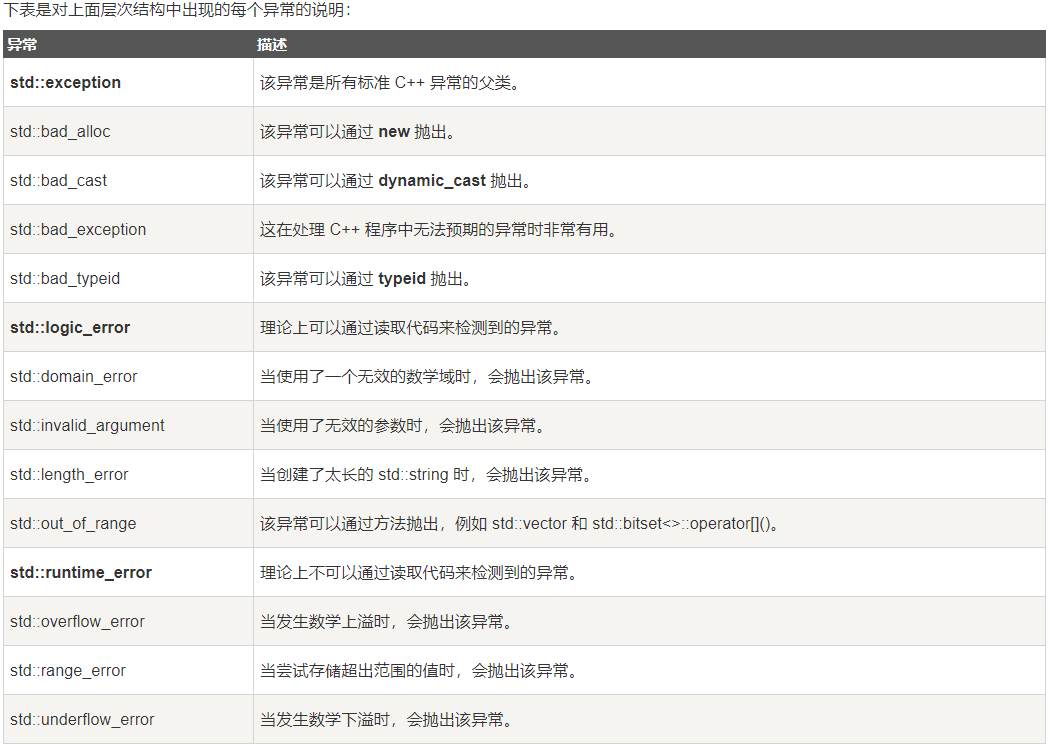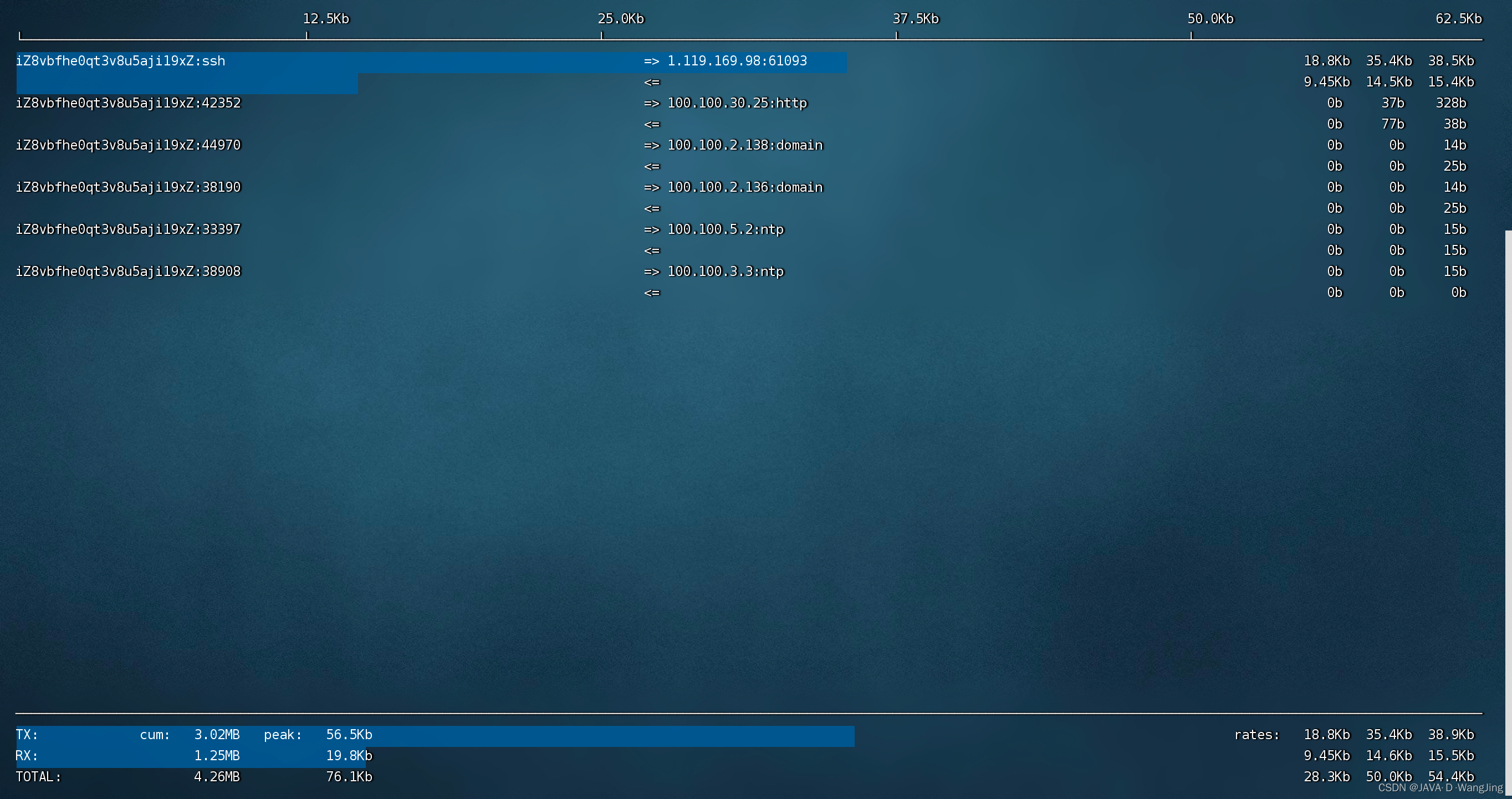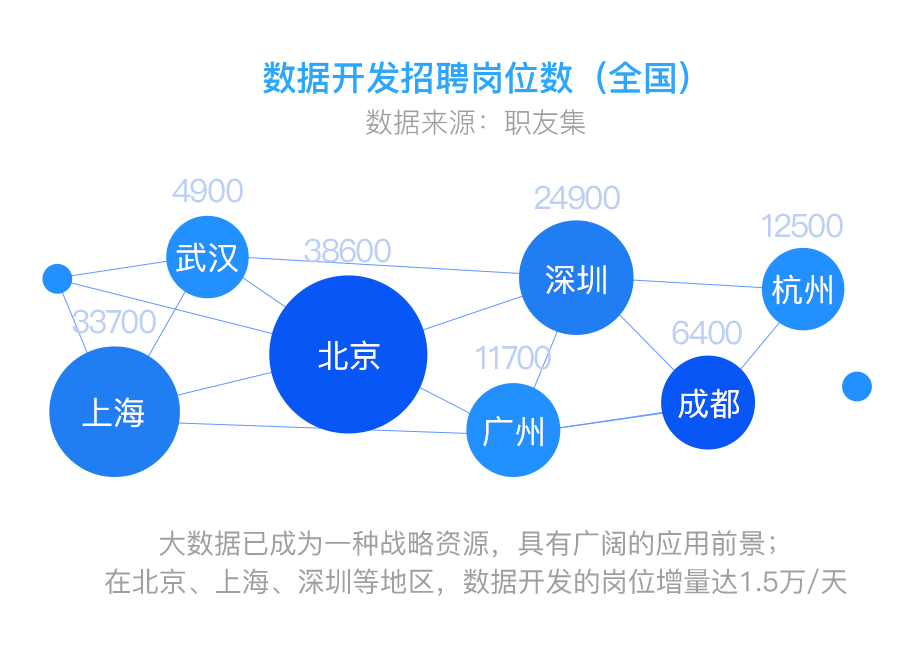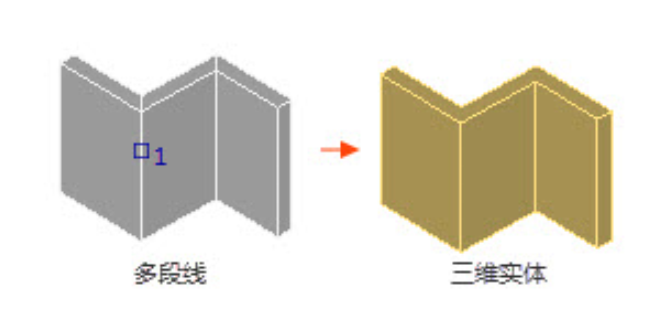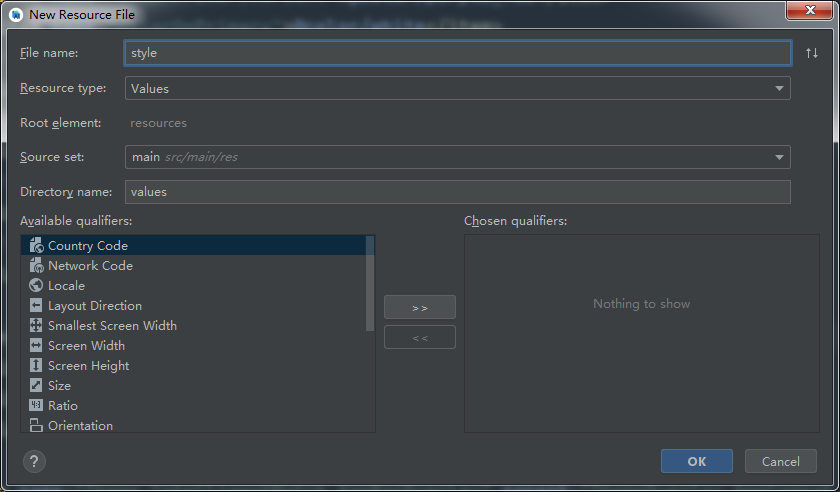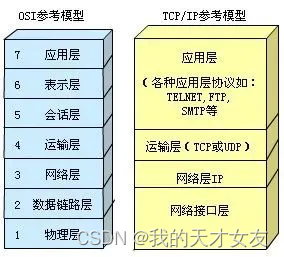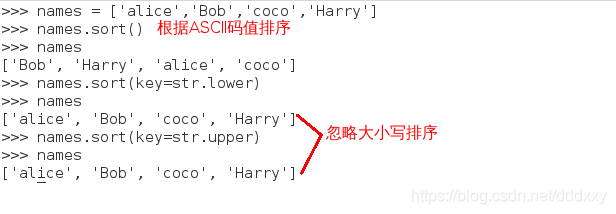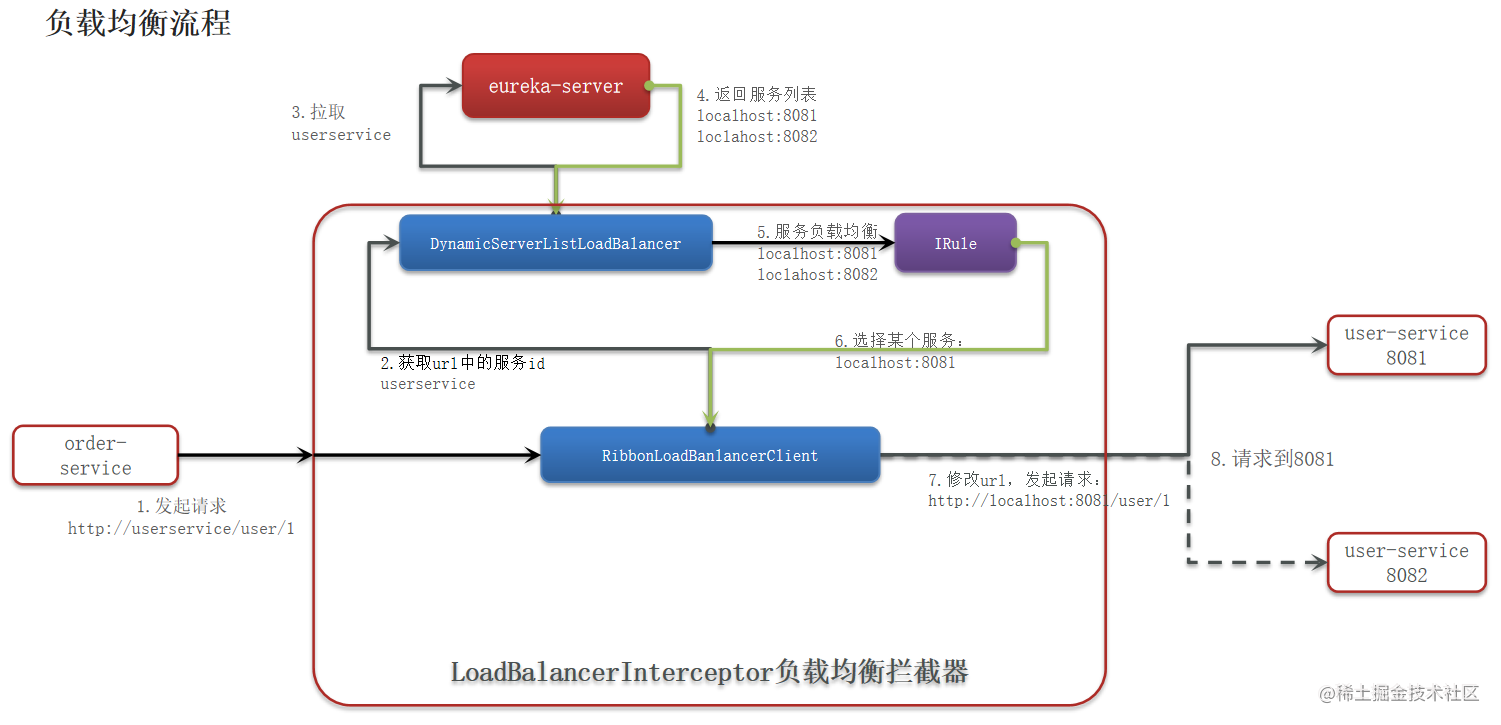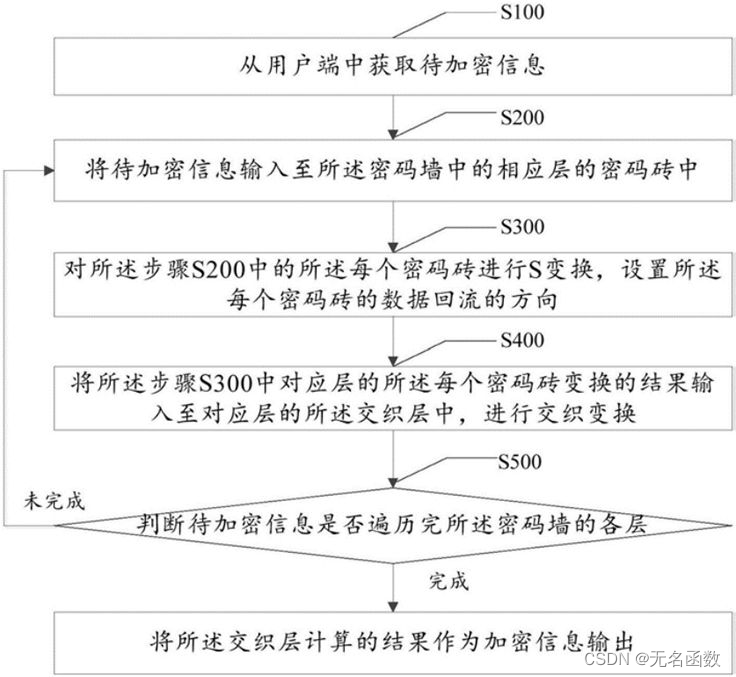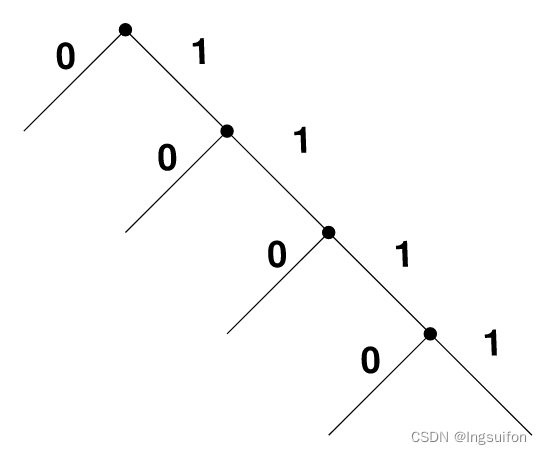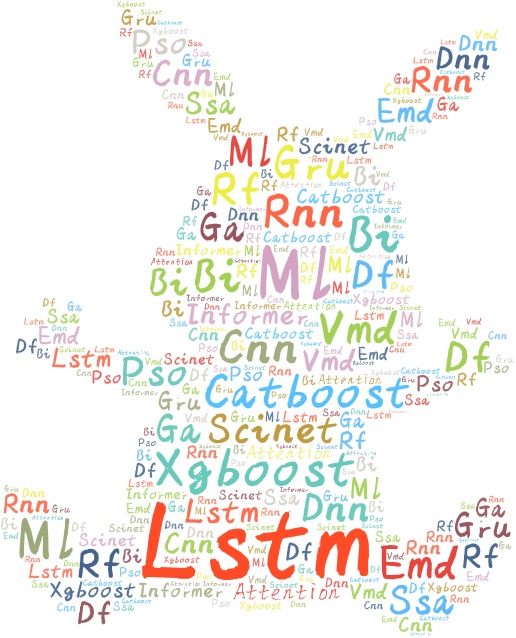《C++ Primer Plus》(第6版)第8章编程练习
- 《C++ Primer Plus》(第6版)第8章编程练习
- 1. 打印字符串
- 2. CandyBar
- 3. 将string对象的内容转换为大写
- 4. 设置并打印字符串
- 5. max5()
- 6. maxn()
- 7. SumArray()
《C++ Primer Plus》(第6版)第8章编程练习
1. 打印字符串
编写通常接受一个参数(字符串的地址),并打印该字符串的函数。然而,如果提供了第二个参数(int类型),且该参数不为0,则该函数打印字符串的次数将为该函数被调用的次数(注意,字符串的打印次数不等于第二个参数的值而等于函数被调用的次数)。是的,这是一个非常可笑的函数,但它让您能够使用本章介绍的一些技术。在一个简单的程序中使用该函数,以演示该函数是如何工作的。
代码:
#include <iostream>
using namespace std;
const int strLen = 20;
void printStr(char *str, int n = 0);
int main()
{
char str[strLen] = "bocchi the rock";
printStr(str);
cout << endl;
printStr(str);
cout << endl;
printStr(str, 10);
cout << endl;
printStr(str, 30);
cout << endl;
system("pause");
return 0;
}
void printStr(char *str, int n)
{
static int count = 0;
count++;
while (n >= 0)
{
if (n == 0)
{
cout << str << endl;
return;
}
else
{
for (int i = 0; i < count; i++)
{
cout << str << endl;
}
return;
}
}
}
运行结果:
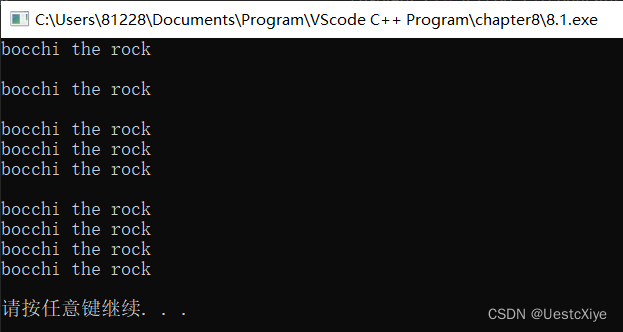
2. CandyBar
CandyBar结构包含3个成员。第一个成员存储candy bar的品牌名称;第二个成员存储candy bar的重量(可能有小数);第三个成员存储candy bar的热量(整数)。 请编写一个程序,它使用一个这样的函数,即将CandyBar的引用、char指针、double和int作为参数,并用最后3个值设置相应的结构成员,最后3个参数的默认值分别为“Millennijum Munch "、2.85和350。另外,该程序还包含一个以 CandyBar 的引用为参数,并显示结构内容的函数。请尽可能使用const。
代码:
#include <iostream>
#include <cstring>
#include <string>
using namespace std;
const int strLen = 20;
typedef struct CandyBar
{
char brand[strLen];
double weight;
int calories;
} CandyBar;
void fill_CandyBar(CandyBar &candyBar, const char brand[] = "Millennium Munch", const double weight = 2.85, const int calories = 350);
void display_CandyBar(const CandyBar &candyBar);
int main()
{
CandyBar c1, c2;
fill_CandyBar(c1);
display_CandyBar(c1);
cout << endl;
fill_CandyBar(c2, "Margaret", 4.28, 900);
display_CandyBar(c2);
system("pause");
return 0;
}
void fill_CandyBar(CandyBar &candyBar, const char brand[], const double weight, const int calories)
{
strcpy_s(candyBar.brand, brand);
candyBar.weight = weight;
candyBar.calories = calories;
}
void display_CandyBar(const CandyBar &candyBar)
{
cout << "Brand:" << candyBar.brand << endl;
cout << "Weight:" << candyBar.weight << endl;
cout << "Calories:" << candyBar.calories << endl;
}
运行结果:
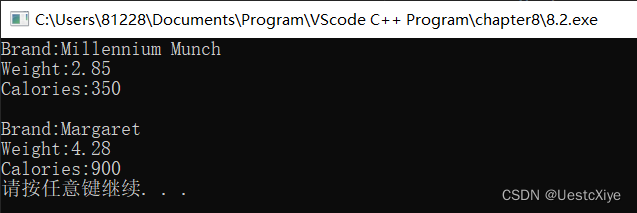
3. 将string对象的内容转换为大写
编写一个函数,它接受一个指向string对象的引用作为参数“并将该string对象的内容转换为大写,为此可使用表6.4描述的函数 toupper()。然后编写一个程序,它通过使用一个循环让您能够用不同的输入来测试这个函数,该程序的运行情况如下:
Enter a string (q to quit) : go away
GO AWAY
Next string (q to quit) : good grief!
GOOD GRIEF!
Next string (q to quit): q
Bye.
代码:
#include <iostream>
#include <cstring>
#include <cctype>
using namespace std;
#define QUIT "q"
void strUpper(string &str);
int main()
{
string s;
cout << "Enter a string (q to quit): ";
getline(cin, s);
while (s != QUIT)
{
strUpper(s);
cout << s << endl;
cout << "Next string (q to quit): ";
getline(cin, s);
}
cout << "Bye!\n";
system("pause");
return 0;
}
void strUpper(string &str)
{
for (int i = 0; i < str.size(); i++)
{
str[i] = toupper(str[i]);
}
}
运行结果:

4. 设置并打印字符串
下面是一个程序框架:
#include<iostream>
using namespace std;
#include<cstring> //for strlen(),strcpy()
struct stringy {
char * str; //points to a string
int ct; //length of string (not couting '\0')
};
// prototypes for set(), show(), and show() go here
int main()
{
stringy beany;
char testing[]="Reality isn't what it used to be.";
set(beany,testing); //first argument is a reference,
//allocates space to hold copy of testing
//sets str member of beany to point to the
//new block, copies testing to new block,
//and sets ct member of beany
show(beany); //prints member string once
show(beany, 2); //prints member string twice
testing[0]= 'D';
testing[1] = 'u';
show(testing); //prints testing string once
show(testing, 3); //prints testing string thrice
show("Done!");
return 0;
}
请提供其中描述的函数和原型,从而完成该程序。注意,应有两个 show ()函数,每个都使用默认参数。请尽可能的使用 const 参数。 set() 使用 new 分配足够的空间来存储定指的字符串。这里使用的技术与设计和实现类使用的相似。(可能还必须修改头文件的名称,删除 using 编译指令,这取决于所用的编译器。)
代码:
#include <iostream>
using namespace std;
#include <cstring> //for strlen(),strcpy()
struct stringy
{
char *str; // points to a string
int ct; // length of string (not counting '\0')
};
// prototypes for set(), show(), and show() go here
void set(stringy &beany, const char *testing);
void show(const stringy &sy, int times = 1);
void show(const char *str, int times = 1);
int main()
{
stringy beany;
char testing[] = "Reality isn't what it used to be.";
set(beany, testing); // first argument is a reference,
// allocates space to hold copy of testing
// sets str member of beany to point to the
// new block, copies testing to new block,
// and sets ct member of beany
show(beany); // prints member string once
show(beany, 2); // prints member string twice
testing[0] = 'D';
testing[1] = 'u';
show(testing); // prints testing string once
show(testing, 3); // prints testing string thrice
show("Done!");
system("pause");
return 0;
}
void set(stringy &beany, const char *testing)
{
beany.ct = strlen(testing) + 1;
beany.str = new char[beany.ct];
strcpy_s(beany.str, beany.ct, testing);
}
void show(const stringy &sy, int times)
{
for (int i = 0; i < times; i++)
cout << sy.str << endl;
}
void show(const char *str, int times)
{
for (int i = 0; i < times; i++)
cout << str << endl;
}
运行结果:
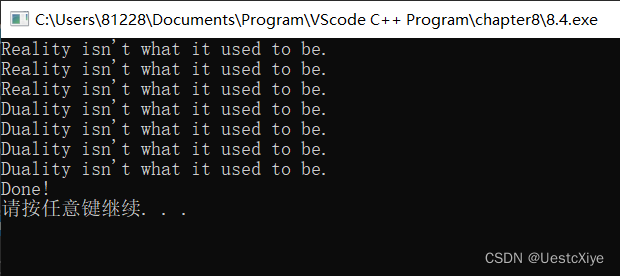
5. max5()
编写模板函数 max5 (),它将一个包含 5 个 T 类型元素的数组作为参数,并返回数组中最大的元素(由于长度固定,因此可以在循环中使用硬编码,而不必通过参数来传递)。在一个程序中使用该函数,将 T 替换为一个包含 5 个 int 值的数组和一个包含 5 个 double 值的数组,以测试该函数。
代码:
#include <iostream>
using namespace std;
const int ArrSize = 5;
template <typename T>
T max5(T arr[])
{
T t_max = arr[0];
for (int i = 1; i < ArrSize; i++)
{
if (arr[i] > t_max)
t_max = arr[i];
}
return t_max;
}
int main()
{
int arr1[ArrSize] = {1, 6, 3, 2, 5};
double arr2[ArrSize] = {1.20, 2.30, 5.2, 1.4, 2.7};
cout << "The maximum value in int array is " << max5(arr1) << endl;
cout << "The maximum value in double array is " << max5(arr2) << endl;
system("pause");
return 0;
}
运行结果:

6. maxn()
编写模板函数 maxn (),它将由一个 T 类型元素组成的数组和一个表示数组元素数目的整数作为参数,并返回数组中最大的元素。在程序对它进行测试,该程序使用一个包含 6 个 int 元素的数组和一个包含 4 个 double 元素的数组来调用该函数。程序还包含一个具体化,它将 char 指针数组和数组中的指针数量作为参数,并返回最长的字符串的地址。如果有多个这样的字符串,则返回其中第一个字符串的地址。使用由 5 个字符串指针组成的数组来测试该具体化。
代码:
#include <iostream>
#include <cstring>
using namespace std;
#define intSize 6
#define doubleSize 4
#define charSize 5
template <typename T>
T maxn(T arr[], int n)
{
T t_max = arr[0];
for (int i = 1; i < n; i++)
{
if (arr[i] > t_max)
t_max = arr[i];
}
return t_max;
}
template <>
char *maxn(char *arr[], int n)
{
const char *s = arr[0];
for (int i = 1; i < n; i++)
{
if (strlen(arr[i]) > strlen(s))
s = arr[i];
}
return s;
}
int main()
{
int arr1[intSize] = {1, 6, 3, 2, 5, 10};
double arr2[doubleSize] = {2.3, 5.2, 1.4, 2.7};
char *arr3[charSize] = {"a", "bb", "ccc", "dddd", "eeeee"};
cout << "The maximum value in int array is " << maxn(arr1, intSize) << endl;
cout << "The maximum value in double array is " << maxn(arr2, doubleSize) << endl;
cout << "The longest string in char array is " << maxn(arr3, charSize) << endl;
system("pause");
return 0;
}
运行结果:
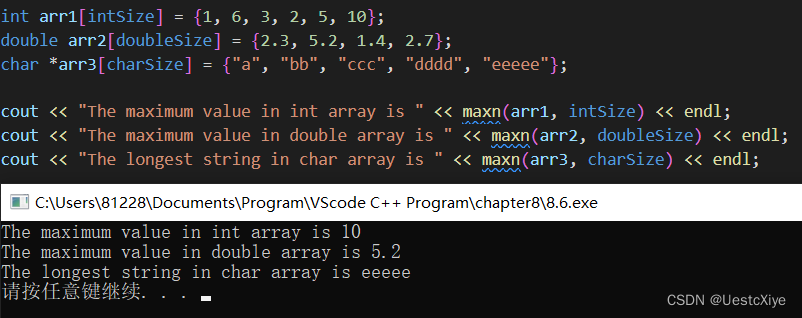
7. SumArray()
修改程序清单 8.14 ,使其使用两个名为 SumArray ()的模板函数来返回数组元素的总和,而不是显示数组的内容。程序应显示thing的总和以及所有 debt 的总和。
代码:
#include <iostream>
using namespace std;
template <typename T> // template A
T SumArray(T arr[], int n);
template <typename T> // template B
T SumArray(T *arr[], int n);
struct debts
{
char name[50];
double amount;
};
int main()
{
int things[6] = {13, 31, 103, 301, 310, 130};
struct debts me_E[3] =
{
{"Ima Wolfe", 2400.0},
{"Ura Foxe", 1300.0},
{"Iby Stout", 1800.0}};
double *pd[3];
for (int i = 0; i < 3; i++)
pd[i] = &(me_E[i].amount);
cout << "Listing Mr.E's counts:" << endl;
cout << SumArray(things, 6) << endl;
cout << "Listing Mr.E's debts:" << endl;
cout << SumArray(pd, 3) << endl;
system("pause");
return 0;
}
template <typename T>
T SumArray(T arr[], int n)
{
T sum = 0;
cout << "template A\n";
for (int i = 0; i < n; i++)
sum += arr[i];
return sum;
}
template <typename T>
T SumArray(T *arr[], int n)
{
T sum = 0;
cout << "template B\n";
for (int i = 0; i < n; i++)
sum += *arr[i];
return sum;
}
运行结果:

